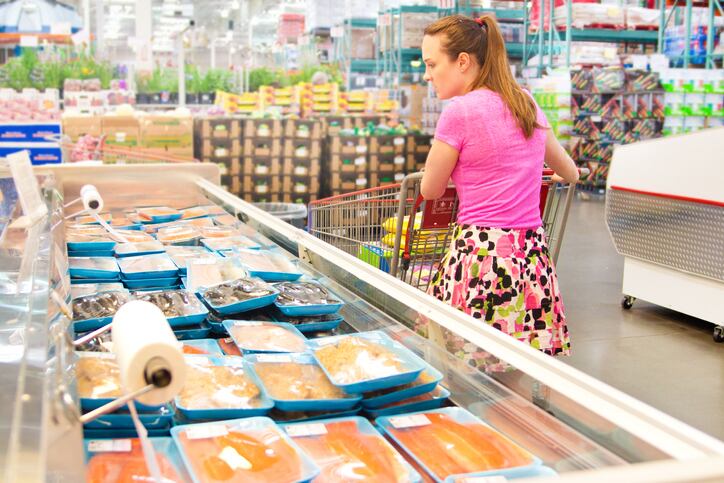FMI's The Power of Seafood surveyed 2,006 adult U.S. grocery shoppers and 18,000 grocery stores in all 50 states and found a notable rise in the “non-seafood eater, many of whom were previously at least occasional seafood eaters,” signifying the implications of inflation on the seafood market and on overall food prices.
Inflation impacts protein-eating habits in Americans
“The impact of inflation can be seen in the protein-eating habits of Americans,” cites the report, adding that meat and pork are purchased twice as often as seafood. Only 25% of the shoppers surveyed would choose seafood over other proteins. When asked if protein prices were equal, more shoppers reported choosing chicken (32%) and beef (33%) over seafood, which indicate additional factors outside of inflation that may contribute to these preferences.
Frequent seafood shoppers decline yet remain an impactful group
Seafood shoppers decreased since 2021 with 59% of consumers citing themselves as frequent or occasional seafood consumers compared to 53% in 2023. The report found that while frequent seafood shoppers decreased from 29% to 24%, the occasional seafood consumer group (29%) continues to make up a comparable size of the population despite reducing their seafood consumption.
Although the seafood shopping segment is significantly less than meat/pork and poultry, the report indicates that the frequent seafood consumer still represents a valuable segment of shoppers due to their spending size. Seafood consumers are typically affluent and educated, spending more both instore and online than non-seafood consumers. In the past, seafood shopping was driven by quality. Due to inflation, consumers are now emphasizing price, the report notes.
Retailers have an opportunity to align with consumer preferences
Retailers reported several reasons why their customers chose them to purchase seafood, beginning with quality/freshness (94%) and variety (88%) at the top of the list. Next were price and selling sustainable seafood (both tied at 71%), indicating a misalignment with consumers on the significance of price.
Supercenters or discount stores (25%) and club stores (12%) are making waves as the primary seafood stores, compared to traditional grocery where seafood purchases are on the decline (35% in 2022 from 51% in 2019). The report also adds that “a diverse mix of other types of stores are cited as the primary seafood store by 28% of seafood shoppers including seafood specialty, limited assortment, natural, ethnic, and online retailers.”
By emphasizing a combination of price and quality on seafood offerings, retailers (particularly supercenters/discount and club stores) have an opportunity to align with shoppers on value.
Frozen and fresh seafood perceptions
Particularly in challenging times, frozen seafood has fared better than fresh seafood in holding market share (44% of total seafood revenue). Fresh seafood sales decreased from $7.1 billion in 2021 to $6.5 billion in 2022. Whereas frozen seafood sales, which were lower than fresh in 2019, surpassed fresh seafood sales in 2020. However, frozen sales declined in 2022 to $7.1 billion, a 2.8% reduction from the previous year.
The report cites that 62% of seafood consumers prefer fresh seafood with the perception that fresh seafood is “better, fresher, tastier, healthier and of better quality.” While 16% of seafood consumers prefer frozen, stating that it’s easier to prepare, lasts longer and maintains freshness and taste.
Sustainability impacts seafood choice, although considerably varied
More than half of seafood consumers (66%) reported that at least one aspect of sustainability impacts their seafood choice. “However, there is often uncertainty with, and value placed on, the labels provided by the ASC (Aquatic Stewardship Council), BAP (Best Aquaculture Practices), MSC (Marine Stewardship Council) and Fair Trade,” the report explains.
Specific considerations from consumers include whether their purchase is caught or raised in a way that ensures availability for future generations (32%), conservation of essential fish habitats (31%) and if workers are treated fairly/humanely (31%). Recyclable, reusable and compostable packaging were listed as the least considered sustainable aspects (22%).




